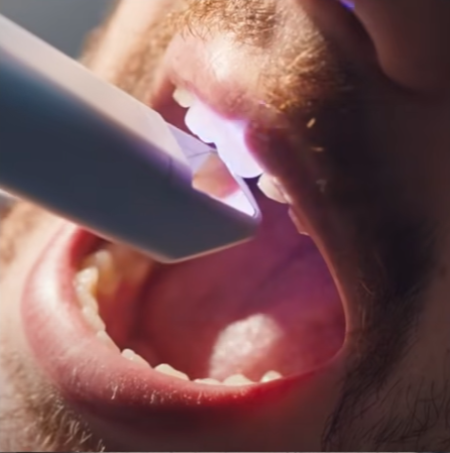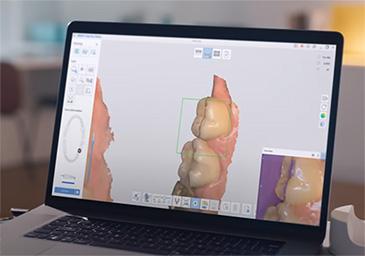The field of dentistry has seen remarkable advancements in recent years, and one of the most significant is the development of intraoral scanners. These devices provide a non-invasive way to capture digital impressions of a patient's teeth and mouth, allowing dentists to create accurate and detailed 3D models for a range of procedures.
 Intraoral scanners are revolutionizing the dental industry, providing enhanced efficiency and precision in a variety of procedures. In this article, we'll explore the many benefits of these devices and how they can help dental practices improve patient outcomes and streamline their workflows.
Intraoral scanners are revolutionizing the dental industry, providing enhanced efficiency and precision in a variety of procedures. In this article, we'll explore the many benefits of these devices and how they can help dental practices improve patient outcomes and streamline their workflows.
Intraoral scanners use a small wand-like device that is placed inside a patient's mouth to capture images of their teeth and gums. These images are then used to create a highly detailed 3D model of the patient's mouth. The scanner uses a combination of light projection and image capture technology to create these digital impressions.
Benefits of intraoral scanners for dental practices
Enhanced efficiency and precision:
Intraoral scanners provide a level of precision that is difficult to achieve with traditional dental impressions. By eliminating the need for physical impression materials, dentists can create digital models that are more accurate and detailed. This precision allows dentists to plan treatments more effectively, reducing the need for adjustments and improving overall treatment outcomes.
Improved patient outcomes:
Intraoral scanners provide a more comfortable experience for patients, reducing the need for multiple appointments and minimizing the risk of errors. With the ability to capture detailed digital impressions quickly and accurately, dentists can create customized treatment plans that are tailored to each patient's unique needs.
Reduced chair time:

Increased patient comfort:
Traditional dental impressions can be uncomfortable and even painful for some patients. Intraoral scanners provide a more comfortable experience by eliminating the need for messy impression materials.
Types of procedures that can benefit from intraoral scanners
Restorative dentistry:
Intraoral scanners can be used for a variety of restorative dental procedures, including crowns, bridges, and inlays/onlays. By providing more accurate and detailed digital impressions, dentists can create restorations that fit more precisely and require fewer adjustments.
Orthodontics:
Intraoral scanners are increasingly being used for orthodontic treatments, such as clear aligners. By providing accurate digital impressions, dentists can create customized treatment plans that are tailored to each patient's unique needs, improving overall treatment outcomes.
 Implant dentistry:
Implant dentistry:
Intraoral scanners are also used for implant dentistry procedures, such as implant-supported dentures. By providing detailed digital impressions, dentists can create precise implant restorations that fit better and last longer.
Intraoral scanners are changing the way dental practices approach patient care. By providing enhanced efficiency and precision, these devices are helping dentists improve patient outcomes and streamline their workflows. With the ability to capture highly detailed digital impressions quickly and comfortably, intraoral scanners are a valuable tool for a range of dental procedures, from restorative dentistry to orthodontics and implant dentistry. Investing in intraoral scanners can benefit both dental practices and their patients, providing a more accurate, comfortable, and efficient dental experience.
FAQs about intraoral scanners:
Are intraoral scanners safe?
Yes, intraoral scanners are safe and pose no risk to patients. They use non-invasive technology to capture digital impressions, eliminating the need for physical impressions that can be uncomfortable or even painful for some patients.
How much do intraoral scanners cost?
The cost of intraoral scanners can vary depending on the type and brand of the device. However, the investment can be worth it for dental practices as they can increase efficiency, improve patient outcomes, and reduce chair time.
Can intraoral scanners be used for orthodontic treatments?
Yes, intraoral scanners can be used for orthodontic treatments such as clear aligners. They can capture highly detailed digital impressions of a patient's teeth and gums, allowing dentists to create customized treatment plans that are tailored to each patient's unique needs.
Enhancing Efficiency and Precision: How Intraoral Scanners Benefit Dental Practices